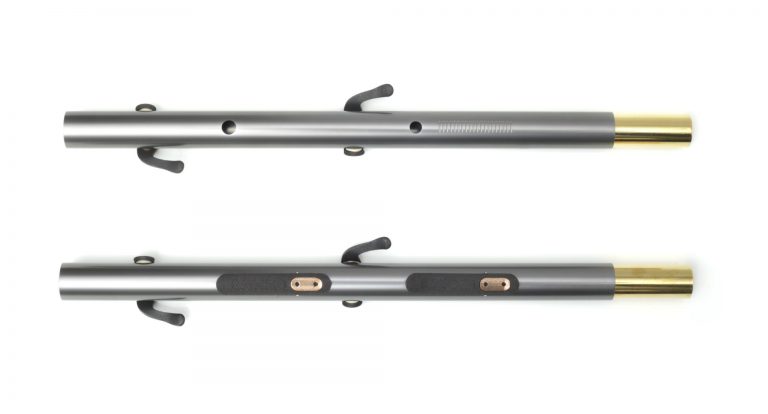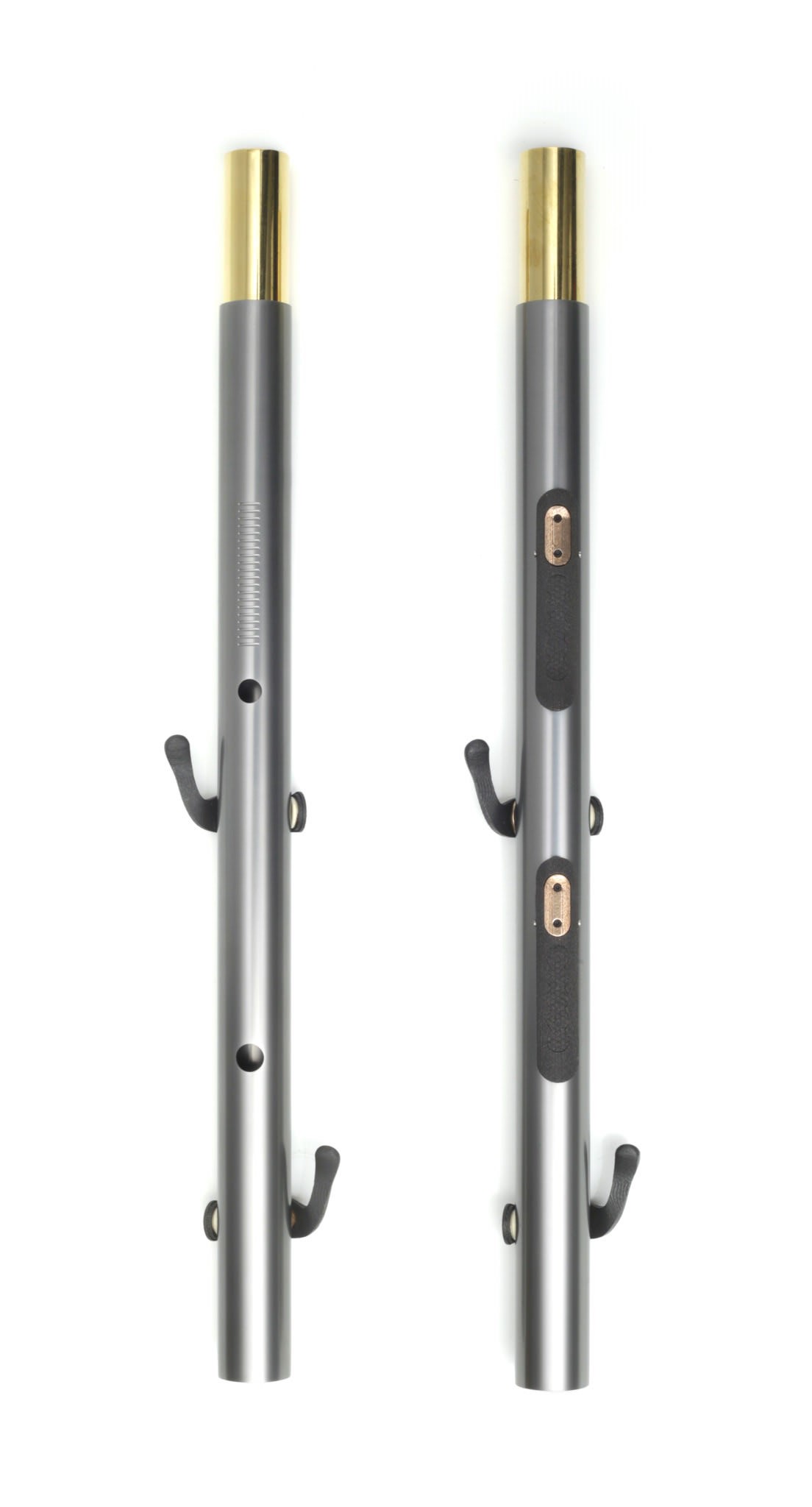Developing a chromatic whistle of sorts was probably why I started making whistles in the first place. Trying to play a standard 6-hole whistle chromatically, while doable to some extent, has always been pretty awkward. While not impossible, those who try often report long journeys trying to get low whistles to play chromatically. This is not to take anything away from those developments, tone-hole layouts, and cross fingerings but this is certainly to offer an alternative.
In fact, any key system on any woodwind is awkward to some degree in one way or another. The main reason for this is an inherent difficulty for humans in playing all 12 notes of a chromatic scale …because we typically have only 10 fingers!
Purely by chance, human and musical evolution has not favored wind instrument makers/players, but it has led to many creative solutions and spawned new musical genres and innovative ideas along the way.

In the development of woodwind instruments, at a certain point in history, keys and levers started to be added to try and make it possible to play 12 notes. This was not the only solution by any means; harmonics/over-tones, cross fingerings, and double holes (as seen in recorders) have also contributed and resonated in certain cultures and at certain times. But keys and levers became the most commonly used technology, and the mechanism itself was highly innovative in its day.
By some measures, the ‘ultimate’ key system was designed by the gifted flute maker and player Theobald Boehm. This system, which has become the default on saxophones, flutes, and clarinets, was a masterpiece of mechanical ingenuity, designed at the height of the industrial revolution in the 1830 and 40s. Boehm’s system was a bold, brilliant, and highly technical system of levers that intertwined and could be opened in various combinations to play the additional notes in the chromatic scale and to greatly extend the capabilities of the instrument.

While it was a masterpiece of ingenuity, several things had been forfeited in the design. Every hole was now covered with a pad and pad-cup, so that fingers no longer had direct contact with the tone-holes on any of the notes. This made some ornaments and note transitions more difficult because finger movement was translated through mechanisms that, while good, could never be as efficient and responsive as with direct contact with the body of the instrument. This, in a way, pushed the music into more and more technical realms. The flute, clarinet, and oboe were adopted in classical music and music schools across Europe. But the Boehm key system never gained quite the same traction in authentic culture and music. This was nothing to do with the modernity of it – the accordion might demonstrate how a technical and ‘modern’ design could be co-opted into worldwide cultures from Uzbekistan to Scotland.
 While Boehm’s system was highly successful in some genres, it was not in others, and for this reason, the simple system flute, which actually pre-dated Boehm’s, has remained not just alive but more used in some authentic cultural musics around the world. While brilliant in its ways, it also has its limitations. Some of the hand and finger movements required to activate keys and notes have proved to be awkward, and so additional key-work has often been added to offer musicians alternative ways to reach the same note depending on what the adjacent notes might be. This does not necessarily take away from the brilliance of this design, but, like with Boehm’s design, a different set of positives and negatives emerged.
While Boehm’s system was highly successful in some genres, it was not in others, and for this reason, the simple system flute, which actually pre-dated Boehm’s, has remained not just alive but more used in some authentic cultural musics around the world. While brilliant in its ways, it also has its limitations. Some of the hand and finger movements required to activate keys and notes have proved to be awkward, and so additional key-work has often been added to offer musicians alternative ways to reach the same note depending on what the adjacent notes might be. This does not necessarily take away from the brilliance of this design, but, like with Boehm’s design, a different set of positives and negatives emerged.
The two systems are not the only key systems by any means. Many others have been proposed and are in use, but a great majority are variations of these two systems.
When in 2004 I started looking at key systems to go on a whistle, I wondered if there might be an alternative to these two systems. When I started sketching my early designs, I concentrated on simplifying and reducing the number of elements in the Boehm system while keeping the tone-holes open and utilizing some of the clever ways in which the finger patterns made use of note fingerings like F XXXOXO and F# XXXXOO through the use of mechanical linkages.
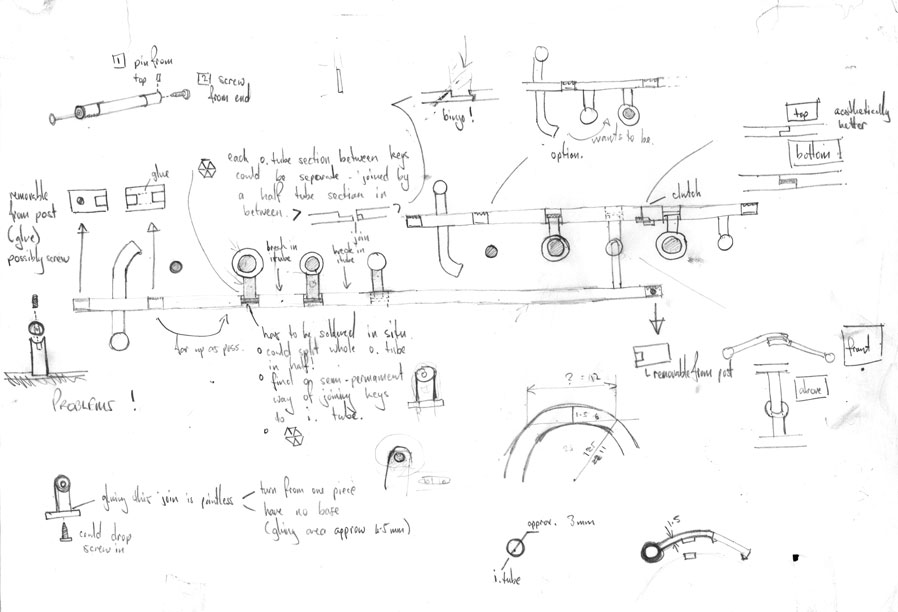
These never made it off the drawing board. There was no reason why a Boehm or simple key system could not be put on a whistle, but I just didn’t see the reason to do that – those systems were great at what they were doing as it was – and it didn’t seem right for the simple form of the whistle or the music that is played on it.
 Two years later, I was experimenting with a completely different approach – something that did make it off the drawing board and into a basic prototype to prove the concept or not. This adopted the idea that the flat fingering on the piper’s grip, as often used on a low D, left the possibility of activating an additional note with the tips of the fingers. It produced a working prototype of sorts after an inordinate amount of time, largely because the geometry of this was hideously difficult to get right.. There were several technical difficulties to solve also. Classical flutes and saxophones, being made of ferrous metals, allowed keywork to be easily soldered on. Wooden flutes, oboes, and clarinets allowed pivot blocks to be used or key posts screwed into the thickness of the wood. Aluminum, as typically used on low whistles, was awkward to weld accurately and difficult to drill and tap due to its thickness. Due to this,
Two years later, I was experimenting with a completely different approach – something that did make it off the drawing board and into a basic prototype to prove the concept or not. This adopted the idea that the flat fingering on the piper’s grip, as often used on a low D, left the possibility of activating an additional note with the tips of the fingers. It produced a working prototype of sorts after an inordinate amount of time, largely because the geometry of this was hideously difficult to get right.. There were several technical difficulties to solve also. Classical flutes and saxophones, being made of ferrous metals, allowed keywork to be easily soldered on. Wooden flutes, oboes, and clarinets allowed pivot blocks to be used or key posts screwed into the thickness of the wood. Aluminum, as typically used on low whistles, was awkward to weld accurately and difficult to drill and tap due to its thickness. Due to this,
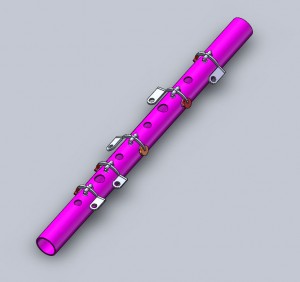
I developed a system of screwing a micro screw from the inside of the bore of the instrument into the keywork. After making a specialist tool to place these screws deep into the body of the instrument, it worked quite well. But the design itself and prototype were poor, to say the least. There were several difficulties, one being that it was so sensitive to the length of the player’s fingers, so every instrument would need to be made specifically for the player, something that was entirely unfeasible, given how long it had taken to make one! The key and tone-hole at each position were also extremely difficult to activate at the same time. This design had taken so much energy to realise that, along with the other whistles being made in the workshop for customers around the world, I became quite ill with Chronic Fatigue in the winter of 2008.
For several years, I was severely debilitated by the illness. Hope of making musical instruments again, and indeed leading any kind of a normal life, seemed extremely unlikely. Chronic Fatigue is an extremely pervasive illness that is incredibly difficult to recover from because so little is known about it, and the normal scientific and medical approach of considering physical and mental health separately rendered it completely useless in dealing with an illness that spans both through the body-mind. Thankfully, with some help from some very clever therapists working outside the established medical practices, I was able to crack the code and recover from the illness, although this ultimately would take 10 years.
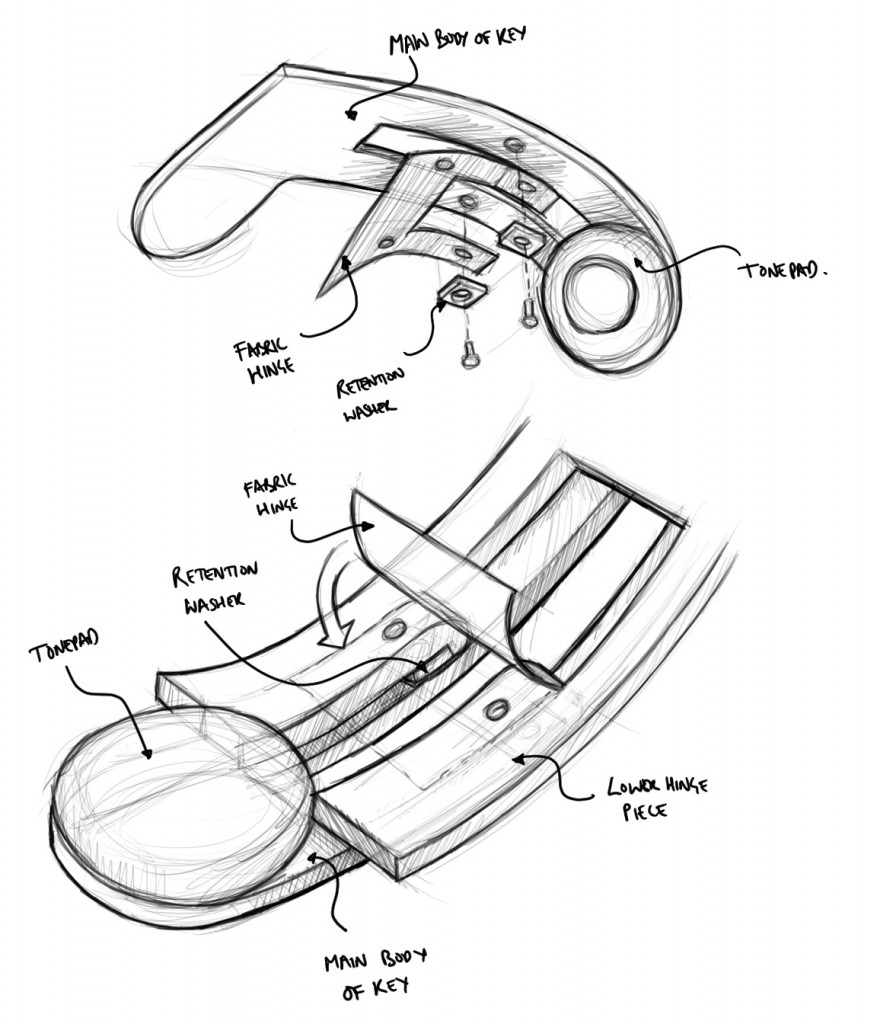
When I returned to the workshop, the masterly designer and mathematician Brian Loudon and I collaborated and looked at the design of the keywork itself in case we came upon a new mechanism itself for the keys. The mk blog goes back just far enough to to record some of these developments around 2010 (check: mk chameleon category). We dispensed with a pivot using keywork floating on leaf springs. This we open-sourced through the mk website for some time, to let people know what we were doing and to see if collaboratively we could unearth something exciting. While it produced some interesting ideas, which we may still incorporate going forward, it still left the core keywork layout unsolved.

Around 2018, another incredibly talented designer, Roy Shearer, came to work at the mk workshop and we pushed forward the design challenges of the time. We stripped it all right back to only the essential elements. The G# and Eb keys we added, which feature on nearly all keywork – Simple & Boehm systems included – and we accepted this as a compromise on those two notes. We came to the conundrum of the Bb and F notes, which had been tormenting me for almost 2 decades. Originally, we were working with a simple cantilever key which was open when pressed under the thumb. This would cause additional challenges, however, because the thumbs (on which the instrument rests) would have to be lifted off until a Bb or F would be played. So the instrument would need to be supported some other way. We then moved the pivot point up the instrument so that the thumb would sit on the key in the closed position until the Bb or F was to be played. Doing the same with the F note then left all six tone holes, as on any whistle, untouched. In this way, the original architecture and tone hole layout of the whistle has been maintained on the Chameleon but the additional keys are there to be used should the need arise. As soon as this was born, it was immediately obvious to me that the 20-year conception was over, and the Chameleon had been born. At once, it was so beautifully simple, elegant, and intuitive.

In a way, the mechanism aesthetics and design didn’t matter once the core problem had been solved. Roy and I worked to produce two versions – one from silver steel (which we only ever made in a very small number called the mk Toob) and one using more radical 3D metal printing technology. While testing some of these early instruments, I was regularly picking up and covering the Bb and F holes before the keys were placed on the body. It started to become obvious that it might actually be possible to cover the back tone-holes without the need for any keywork, if an adapted hand position was used. This became the more extreme 2-legged Chameleon, with the original Bb and F keyed Chameleon becoming the 4-legged Chameleon.
From this point, the skilled craftsperson Helena Prentice, jewellery designer Laura Knowles, and I worked to solve the many crafting and production issues during Brexit, Covid, and the ensuing supply chain issues.
It has certainly been a long, at times arduous, but rewarding journey. When you look at the final result, you could easily wonder how it’s taken so long to produce something so simple, but that has, in fact, been the point – to keep reducing and reducing to carve out the most simple and elemental form.
As each month goes by, and we receive messages from people who have received a Chameleon and for whom it has re-invigorated their music and even rebalanced their life, it all feels worthwhile. I will say, despite the turmoil it caused me for a long period, the Chameleon has now done this for my music and my life… I love playing it! 😊

